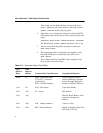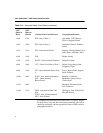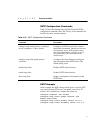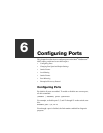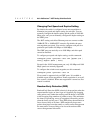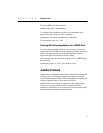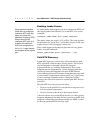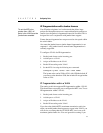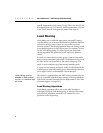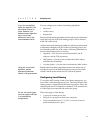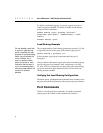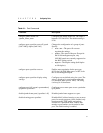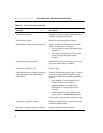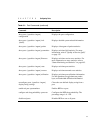
82
C H A P T E R 6 Intel
®
NetStructure™ 480T Routing Switch User Guide
Enabling Jumbo Frames
Some network interface
cards have a configured
maximum MTU size that
does not include the
additional 4 bytes of CRC.
Ensure that the NIC
maximum MTU size is at
or below the maximum
MTU size configured on
the
switch. Larger frames
are dropped at the ingress
port.
To enable jumbo frame support, you must configure the MTU size
(the largest jumbo frame allowed). To set the MTU size, use this
command:
configure jumbo-frame size <jumbo_frame_mtu>
The jumbo_frame_mtu range is 1523 to 9216. The value describes
the maximum size “on the wire,” and includes 4 bytes of CRC plus
another 4 bytes if 802.1Q tagging is being used.
Next, enable support on the physical ports that will carry jumbo
frames, using this command:
enable jumbo-frame ports [<portlist> | all]
Path MTU Discovery
In path MTU discovery, a source host will assume that the path
MTU is the MTU of the first hop, which is known. The host will
send all datagrams on that path with the DF (datagram
fragmentation) bit set, restricting fragmentation. If any of the
datagrams must be fragmented by a switch along the path, that
switch will discard the datagrams and return ICMP (Internet
Control Message Protocol) Destination Unreachable messages with
a code meaning "fragmentation needed and DF set." Upon receipt
of such a message (sometimes called a "Datagram Too Big"
message), the source host reduces its assumed path MTU and can
retransmit.
The path MTU discovery process ends when:
• The host sets the path MTU low enough that its datagrams can be
delivered without fragmentation.
• The host does not set the DF bit in the datagram headers.
A host can choose not to set the DF bit because it is willing to have
datagrams fragmented. Normally, the host continues to set DF in all
datagrams, so that if the route changes and the new PMTU is lower,
the host can perform PMTU discovery again.



